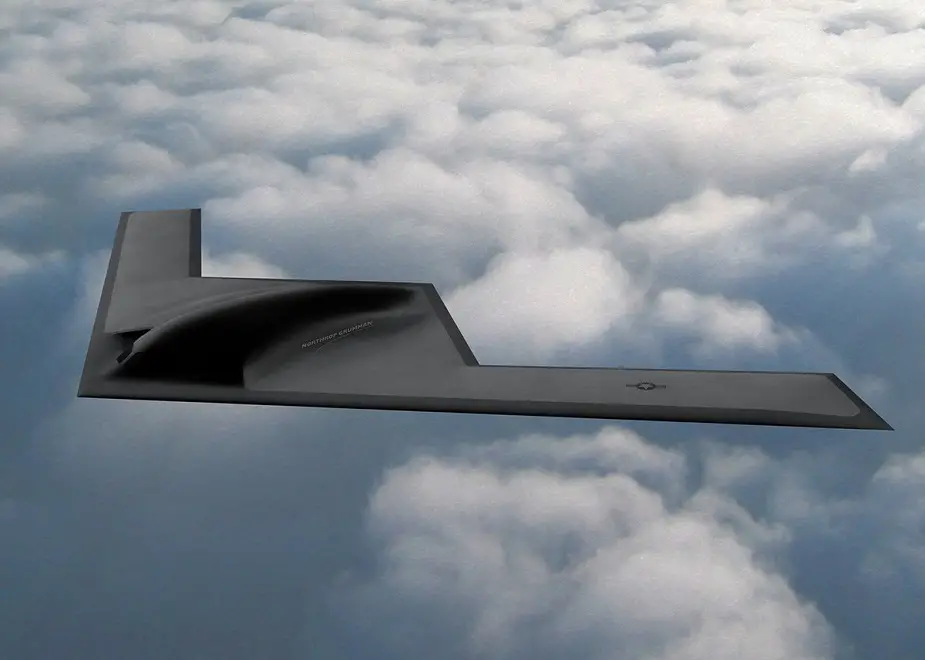Russia and US develop new strategic bomber projects - part 1
Russia and the US have almost simultaneously started to develop new strategic bombers projects.
 B-21 (Picture source: Northrop Grumman)
B-21 (Picture source: Northrop Grumman)
The B-21 of the US is scheduled to take to the air in 2021 and in 2030 the first squadrons, equipped with new machines, are expected to be operationally ready. The first example of the Russian aircraft, being created under the PAK DA (Russian for advanced long-range airborne complex), is also supposed to be rolled out in 2021-2022, with the first flight due somewhat later, closer to 2025. The serial production is scheduled for 2029-2030. The likely date of operational readiness of the first units equipped with this machine is the early 2030s. The "Isvestia" newspaper writes about how the new aircraft relate. The almost simultaneous creation of new strategic aviation aircraft occurs in the Russo-US aerial competition not for the first time. So it was in the 1950s, when the US created the B-52 Stratofortress while the Soviet Union came up with the M-4 and Tu-95. In the 1960s, the two sides worked in parallel on high-altitude intercontinental supersonic machines, which, however, did not reach the production stage. A generation later, in response to the USA’s B-1, the Soviet Union produced the Tu-160. After that the Russian designers omitted one generation, not responding directly to the USA’s stealthy B-2A Spirit created towards the late 1980s. In the 2000s, both countries mulled over the upcoming replacement (at least partial) of the previous generation aircraft. And, it looks like they arrived at the same requirements for the advanced airborne platform.
"According to the information on the PAK DA, it will be, like the B-21, a subsonic stealthy aircraft. Possibly, it will be oriented, more than traditionally accepted by domestic strategist, to tactical missions. In any case, this is probably explained by the fact that following deterioration of relations with the West, its creation was put on the back burner, giving priority to the Tu-160M as a more conventional missile cruise carrier. Obviously, nobody will relieve the PAK DA of the strategic tasks of nuclear deterrence, it’s just necessary to understand that such features as stealth are of little use in delivering supposedly Kh-102 to the launch site several thousand kilometres away from the target. And the supersonic speed under such circumstances is of no substance either," said the expert Alexander Yermakov.
Yermakov believes that advanced aircraft will need stealth primarily for reducing losses in local conflicts involving third world countries where such aircraft can be used not only for launching cruise missiles but also for dropping aerial bombs guided towards essential targets.
In both cases the advanced machines must be simpler and less costlier than the products developed during the cold war. So, the PAK DA will have a lower takeoff weight, payload and size than the Tu-160 (and, as mentioned above, will be subsonic). The B-21, too, will be smaller than the B-2A, appreciably less costly (here it should be noted that the cost reduction is partially explained by the progress of technologies compared to the late 1980s, especially in the area of control systems).
In both cases the aircraft must be produced in fairly large lots though complete replacement of predecessors is not expected. Thus, the PAK DA must replace the Tu-95MS and part of Tu-22M3s. Meantime, modernized Tu-22M3Ms, as well as T-160s and Tu-160Ms will remain in service. In the USA, the B-21 must replace in the first place the B-1B bombers used mainly for tactical missions in local conflicts and ultra-costly B-2As. The replacement of B-52s is expected much later, in the 2040s.
It’s noteworthy that both machines, in the course of specification definition, sustained certain changes in their concept. It particularly applies to the Russian aircraft, which for some time was seriously supposed to be supersonic before a decision was taken to opt for a subsonic version.
© Copyright 2019 TASS. All rights reserved. This material may not be published, broadcast, rewritten or redistributed.


























